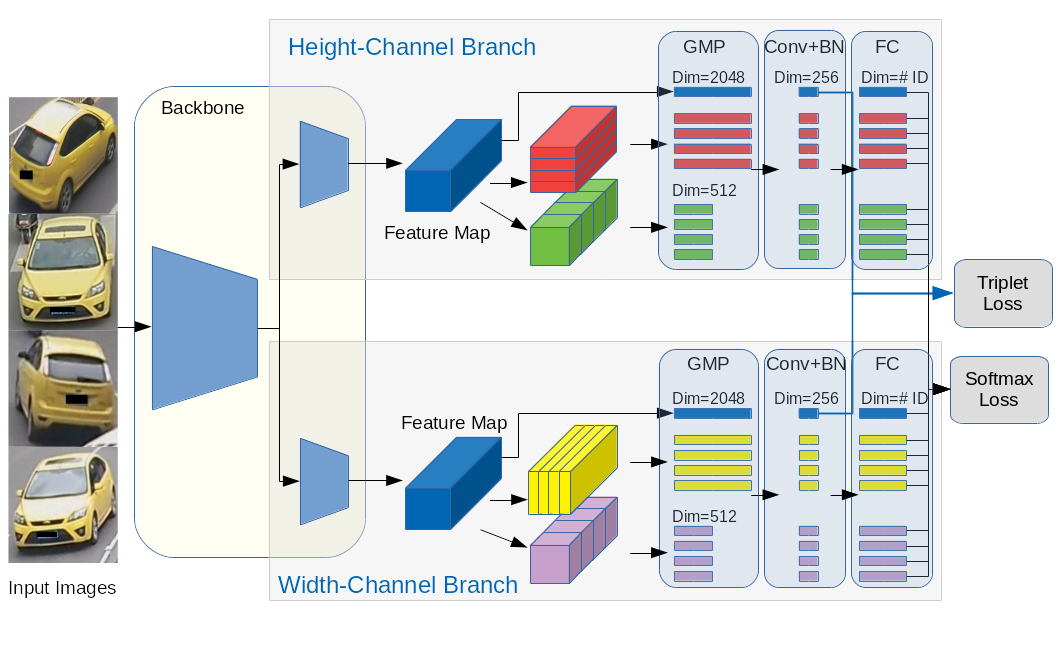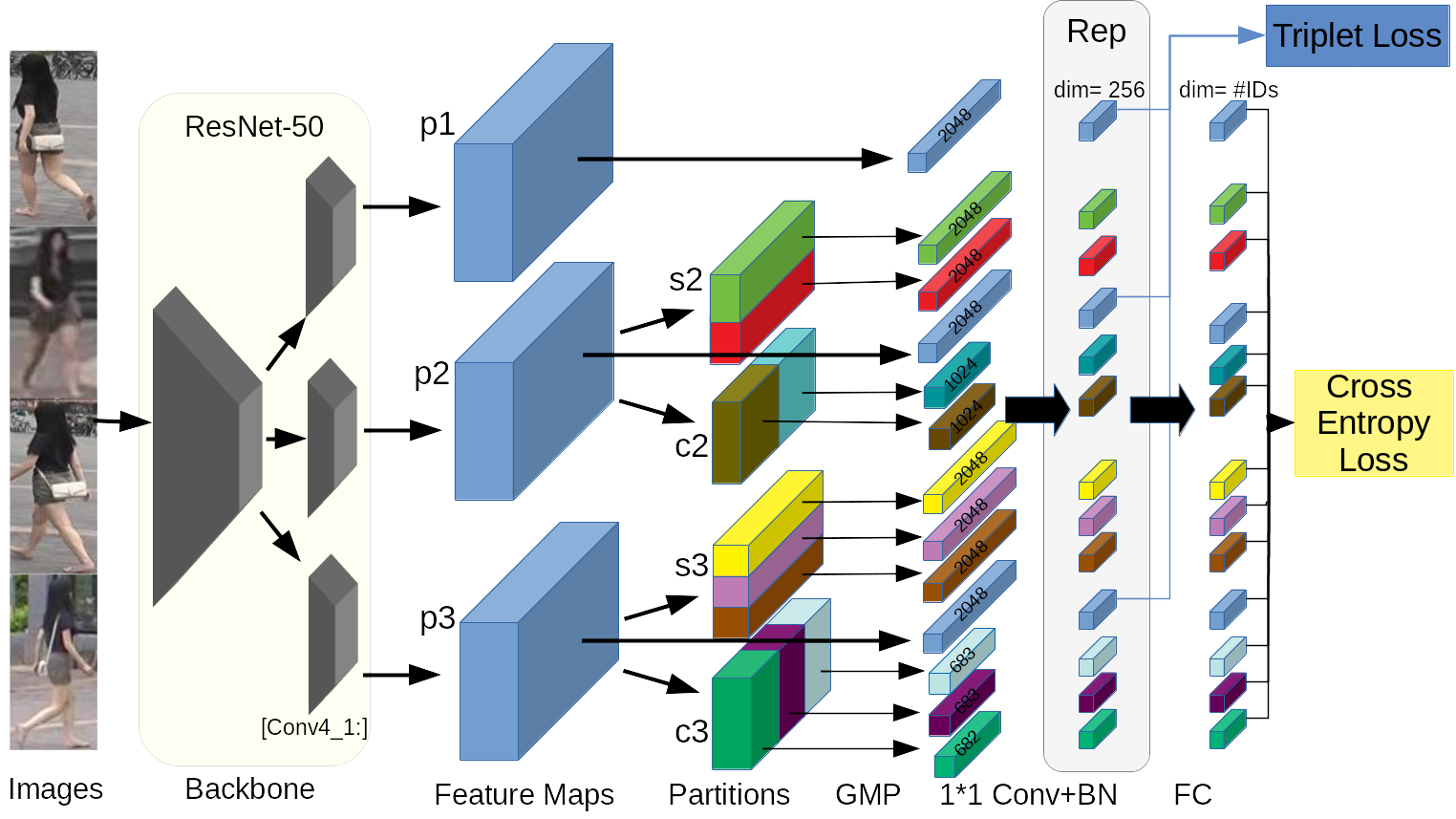Section:
New Results
Partition and Reunion: A Two-Branch Neural Network for Vehicle Re-identification
Participants :
Hao Chen, Benoit Lagadec, François Brémond.
The smart city vision raises the prospect that cities will become more intelligent in various
fields, such as more sustainable environment and a better quality of life for residents. As a
key component of smart cities, intelligent transportation system highlights the importance of
vehicle re-identification (Re-ID). However, as compared to the rapid progress on person Re-ID,
vehicle Re-ID advances at a relatively slow pace. Some previous state-of-the-art approaches
strongly rely on extra annotation, like attributes (vehicle color and type) and key-points
(wheels and lamps). Recent work on person Re-ID shows that extracting more local features can
achieve a better performance without considering extra annotation. In this work, we propose
an end-to-end trainable two-branch Partition and Reunion Network (PRN) for the challenging
vehicle Re-ID task. Utilizing only identity labels, our proposed method outperforms existing
state-of-the-art methods on four vehicle Re-ID benchmark datasets, including VeRi-776,
VehicleID, VRIC and
CityFlow-ReID by a large margin. The general architecture of our
proposed method is represented in the Figure 8.
Figure
8. General architecture of our proposed model. In this work, a ResNet-50 is used as our backbone network. Layers after conv4_1 in Resnet-50 are duplicated to split our network into 2 independent branches. GMP refers to Global Max Pooling. Conv refers to 1*1 convolutional layer, which aims to unify dimensions of global and local feature vectors. FC refers to fully connected layer. BN refers to Batch Normalization layer. In the test phase, all the feature vectors (Dim=256) after Batch Normalization layer are concatenated together as an appearance signature (Dim=256*18).
|
|
Learning Discriminative and Generalizable Representations by Spatial-Channel Partition for Person Re-Identification
In Person Re-Identification (Re-ID) task, combining local and global features is a common
strategy to overcome missing key parts and misalignment on models based only on global
features.
Using this combination, neural networks yield impressive performance in Re-ID task.
Previous part-based models mainly focus on spatial partition strategies.
Recently, operations on channel information, such as Group Normalization and Channel
Attention, have brought significant progress to various visual tasks.
However, channel partition has not drawn much attention in Person Re-ID. We conduct a
study to exploit the potential of channel partition in Re-ID task [32].
Based on this study,
we propose an end-to-end Spatial and Channel partition Representation network (SCR) in
order to better exploit both spatial and channel information. Experiments conducted on
three mainstream image-based evaluation protocols including Market-1501, DukeMTMC-ReID
and CUHK03 and one video-based evaluation protocol MARS validate the performance of our
model, which outperforms previous state-of-the-art in both single and cross domain Re-ID
tasks. The general architecture of our proposed method is represented in the Figure 9.
Figure
9. Spatial and Channel Partition Representation network. For the backbone network, we duplicate layers after conv4_1 into 3 identical but independent branches that generate 3 feature maps "p1", "p2" and "p3". Then, multiple spatial-channel partitions are conducted on the feature maps. "s2" and "c2" refer to 2 spatial parts and 2 channel groups. "s3" and "c3" refer to 3 spatial parts and 3 channel groups. After global max pooling (GMP), dimensions of global (dim = 2048) and local (dim = 2048, 1024*2 and 683*2+682) features are unified by 1*1 convolution (1*1 Conv) and batch normalization (BN) to 256. Then, fully connected layers (FC) give identity predictions of input images. All the dimension unified feature vectors (dim = 256) are aggregated together as appearance representation (Rep) for testing.
|
|



